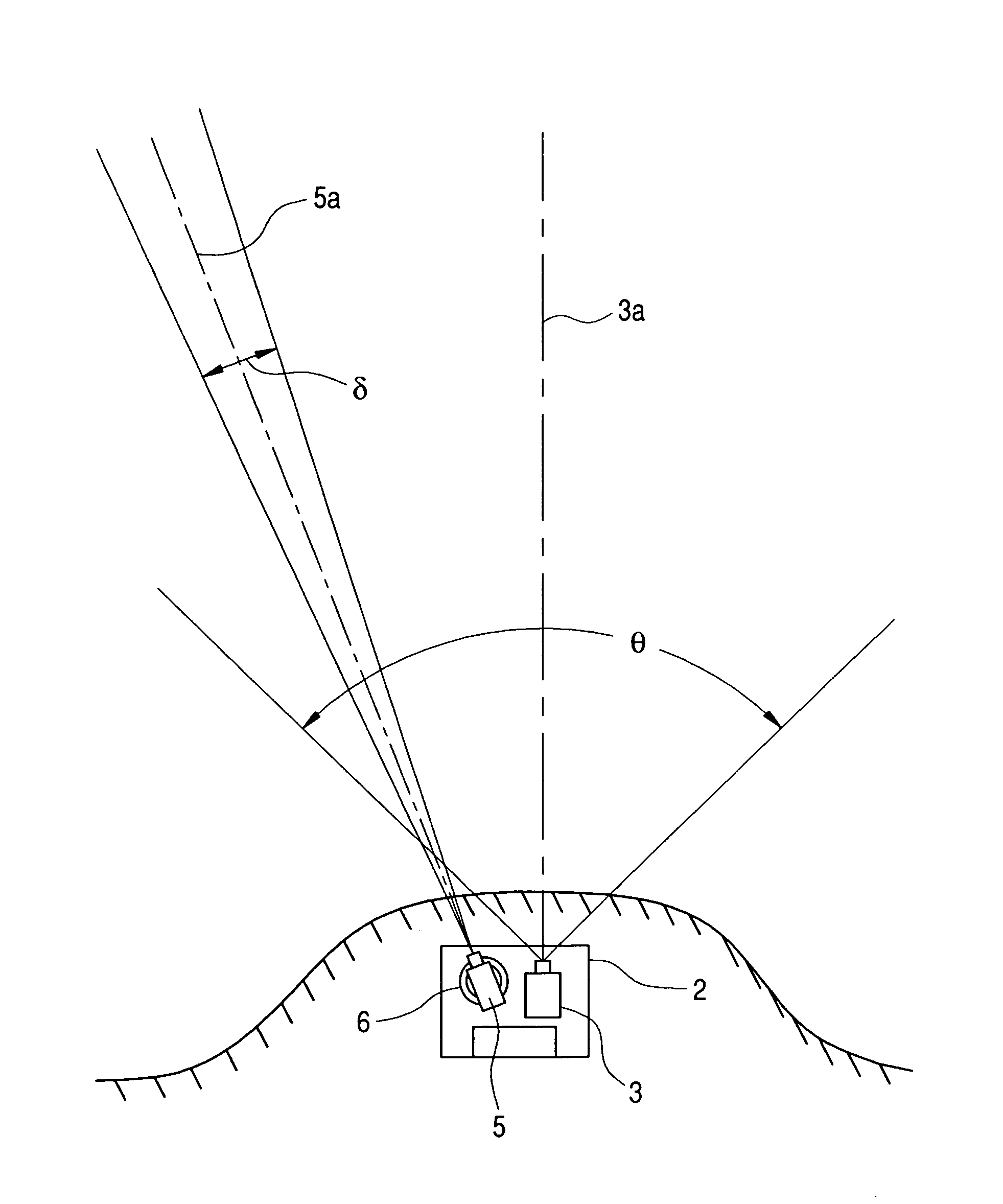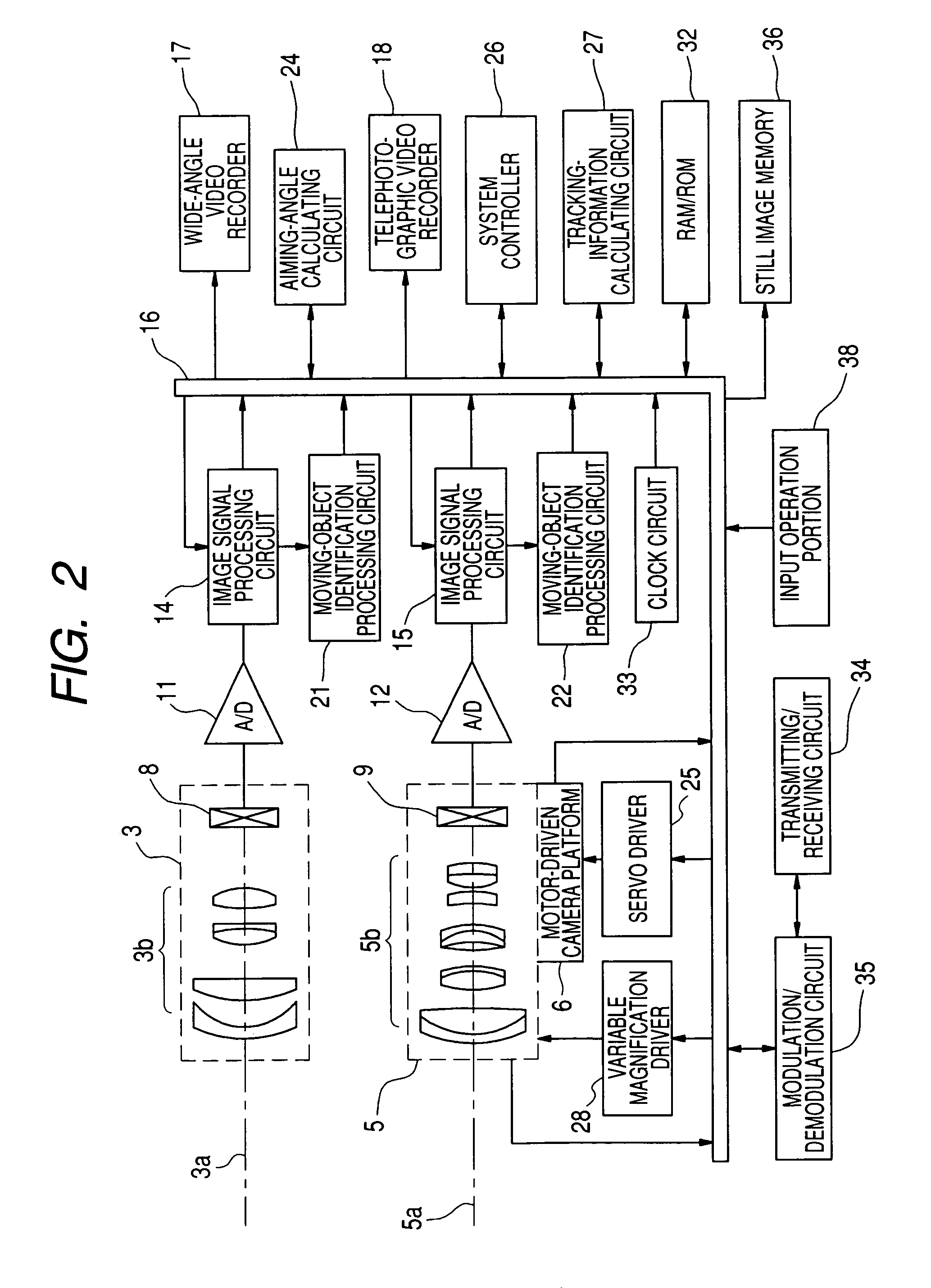Surveillance camera apparatus and surveillance camera system
a surveillance camera and camera system technology, applied in the field of surveillance camera equipment and surveillance camera system, can solve the problems of inability to unmanned apparatus, lack of reliability of obtained tracking information, and difficulty in visually identifying the image of moving objects, and achieve the effect of accurate control of optical axes
- Summary
- Abstract
- Description
- Claims
- Application Information
AI Technical Summary
Benefits of technology
Problems solved by technology
Method used
Image
Examples
Embodiment Construction
[0028]A surveillance camera apparatus according to an embodiment of the invention has a configuration as schematically shown in FIG. 1. That is, the surveillance camera apparatus is configured so that a wide-angle camera 3 and a telephotographic camera 5 are installed on a base 2 installed, for example, at the tip of a cape. A optical axis 3a of the wide-angle camera 3 is fixedly directed in a constant direction. On the other hand, the telephotographic camera 5 is movably supported by a motor-driven pedestal (posture control unit) 6 provided between the telephotographic camera 5 and the base 2. Thus, an optical axis 5a of the telephotographic camera 5 can be inclined in a panning direction and a tilt direction.
[0029]The surveillance area of this surveillance camera apparatus depends on the angle θ of view of the wide-angle camera 3. The angle with which the telephotographic camera 5 can pan has a range large enough to cover at least the angle θ of view of the wide-angle camera 3 aro...
PUM
 Login to View More
Login to View More Abstract
Description
Claims
Application Information
 Login to View More
Login to View More - R&D
- Intellectual Property
- Life Sciences
- Materials
- Tech Scout
- Unparalleled Data Quality
- Higher Quality Content
- 60% Fewer Hallucinations
Browse by: Latest US Patents, China's latest patents, Technical Efficacy Thesaurus, Application Domain, Technology Topic, Popular Technical Reports.
© 2025 PatSnap. All rights reserved.Legal|Privacy policy|Modern Slavery Act Transparency Statement|Sitemap|About US| Contact US: help@patsnap.com



